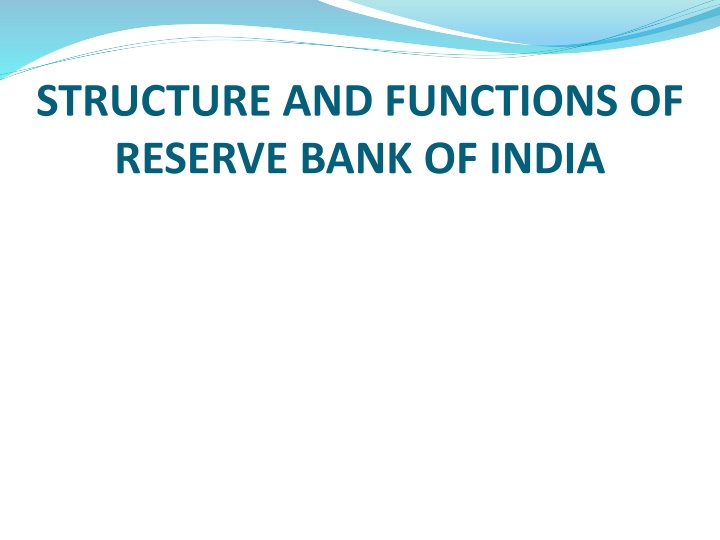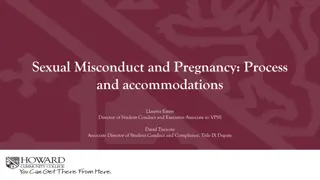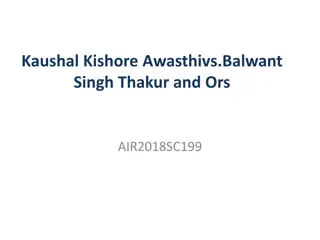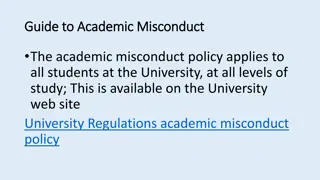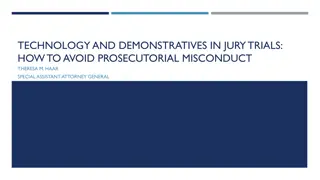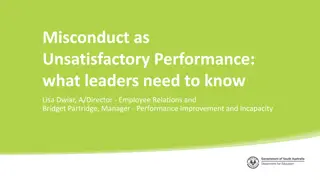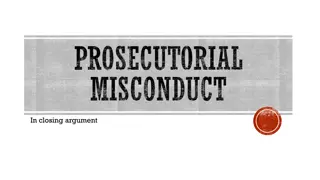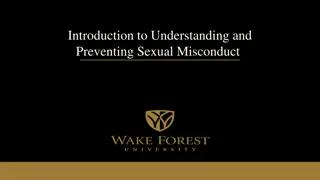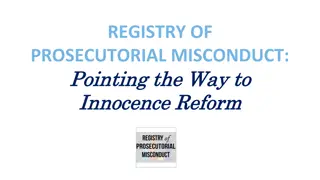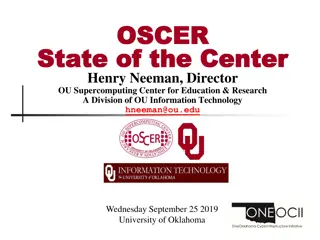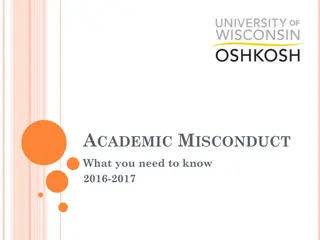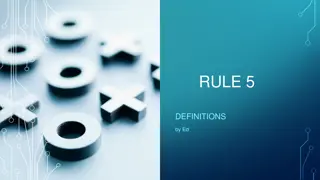Managing Misconduct Risk in Investment Sponsors
Explore case studies in alternative investments, reasons for program failure, and best practices for vetting misconduct in the investment industry. Learn about factors affecting sponsor performance and deal failures.
Download Presentation

Please find below an Image/Link to download the presentation.
The content on the website is provided AS IS for your information and personal use only. It may not be sold, licensed, or shared on other websites without obtaining consent from the author.If you encounter any issues during the download, it is possible that the publisher has removed the file from their server.
You are allowed to download the files provided on this website for personal or commercial use, subject to the condition that they are used lawfully. All files are the property of their respective owners.
The content on the website is provided AS IS for your information and personal use only. It may not be sold, licensed, or shared on other websites without obtaining consent from the author.
E N D
Presentation Transcript
STRUCTURE AND FUNCTIONS OF RESERVE BANK OF INDIA
INTRODUCTION It is the Central Bank of India Established in 1stApril 1935 under the RESERVE BANK OF INDIA ACT . Its head quarter is in Mumbai (Maharashtra). Its present governor is Mr Urjit Patel . It has 22 Regional Offices , most of them in State capitals.
BRIEF HISTORY It was set up on the recommendations of the Hilton Young Commission . It was started as Share-Holders Bank with a paid up capital of 5 crores. Initially it was located in Kolkata. It moved to Mumbai in 1937. Initially it was Privately Owned. Since Nationalization in 1949, the Reserve Bank is fully owned by the Government of India.
Key Landmarks in the journey of RBI In 1926, the Royal Commission on Indian Currency and Finance recommended creation of a central bank for India. In 1927, a bill to give effect to the above recommendation was introduced in the Legislative Assembly, but was later withdrawn due to lack of agreement among various sections of people. In 1933, the White Paper on Indian Constitutional Reforms recommended the creation of a Reserve Bank. A fresh bill was introduced in the Legislative Assembly. In 1934, the Bill was passed and received the Governor General s assent In 1935, Reserve Bank commenced operations as India s central bank on April 1 as a private shareholders bank with a paid up capital of rupees five crore. In 1942 Reserve Bank ceased to be the currency issuing authority of Burma (now Myanmar).
In 1947, Reserve Bank stopped acting as banker to the Government of Burma. In 1948, Reserve Bank stopped rendering central banking services to Pakistan. In 1949, the Government of India nationalized the Reserve Bank under the Reserve Bank (Transfer of Public Ownership) Act, 1948. In 1949, Banking Regulation Act was enacted. In 1951, India embarked in the Planning Era. In 1966, the Cooperative Banks came within the regulations of the RBI. Rupee was devaluated for the first time.
In 1969, Nationalization of 14 Banks was a Turning point in the history of Indian Banking. In 1973, the Foreign Exchange Regulation act was amended and exchange control was strengthened. In 1974, the Priority Sector Advance Targets started getting fixed. In 1975, Regional Rural Banks started In 1985, the Sukhamoy Chakravarty and Vaghul Committee reports embarked the era of Financial Market Reforms in India. In 1991, India came under the Balance of Payment crisis and RBI pledged Gold to shore up reserves. Rupee was devaluated. In 1991-92, Economic Reforms started in India. In 1993, Exchange Rate became Market determined.
In 1994, Board for Financial Supervision was set up. In 1997, the regulation of the Non Banking Financial Companies (NBFC) got strengthened. In 1998, Multiple Indicator Approach for monetary policy was adopted for the first time. In 2000, the Foreign Exchange Management Act (FEMA) replaced the erstwhile FERA. In 2002, The Clearing Corporation of India Ltd Started operation. In 2003, Fiscal Responsibility and Budget Management Act (FRBMA) enacted. In 2004, Liquidity Adjustment Facility (LAF) started working fully. In 2004, Market Stabilization Scheme (MSS) was launched. In 2004 Real Time Gross Settlement (RTGS) started working. In 2006, Reserve Bank of India was empowered to regulate the money, forex, G-Sec and Gold related security markets. In 2007, Reserve bank of India was empowered to regulate the Payment systems. In 2008-09, world under the grip of Global Financial Slowdown, RBI Proactive.
Organizational Structure of RBI RBI is a corporate body , where Ministry of Finance owns directive rights . Managed by Central Board of Directors and four local boards of directors. The bank is headed by the governor and the post is currently held by economist Urjit Patel. There are 4 deputy governors BP Kanungo,, N S Vishwanathan and Viral Acharya, Mahesh Kumar Jain. Two of the four deputy governors are traditionally from RBI ranks and are selected from the Bank's Executive Directors.
Organization and Management of RBI Central Board Appointed / Nominated by central government for a period of not more than 5 years Should meet at least 6 times in an year and once in 3 months ( no. 20) Official Directors - Governor and not more than 4 deputy directors Non official Directors 15 in number . Ten director from various fields and one government official are nominated by government and 4 directors from 4 local boards Local Boards 4 Local board region ( Mumbai, Kolkata, Chennai, New Delhi consist of 5 members appointed by central government for a period of not more than 5 years.
Organization of RBI Central office Department 22 Regional offices , most of them in state capitals Training Establishment 6 Training establishments College of Agricultural Banking Banker s Training College RBI Staff College National Institute for bank management Indira Gandhi Institute for Development Research(IGIDR) Institute for Development and Research in Banking Technology (IDRBT)
PREAMBLE The Preamble of the Reserve Bank of India describes the basic functions of the Reserve Bank as :- To regulate the issue of Bank Notes and keeping of reserves with a view to securing monetary stability in India and generally to operate the currency and credit system of the country to its advantage."
Objectives of RBI * To manage the monetary and credit system of the country. * To stabilizes internal and external value of rupee. * For balanced and systematic development of banking in the country. * For the development of organized money market in the country. * For proper arrangement of agriculture finance. * For proper arrangement of industrial finance. * For proper management of public debts. * To establish monetary relations with other countries of the world and international financial institutions. * For centralization of cash reserves of commercial banks. * To maintain balance between the demand and supply of currency.
FUNCTIONS OF RBI Issue of currency Development role Banker to government Banker to bank Role of RBI in inflation control Formulate monetary policy Manager of foreign reserve Clearing house functions Regulations of banking system
Role of RBI in inflation control Inflation arises when the demand increases and there is a shortage of supply There are two policies in the hands of the RBI. Monetary Policy: It includes the interest rates. When the bank increases the interest rates than there is reduction in the borrowers and people try to save more as the rate of interest has increased. Fiscal Policy: It is related to direct taxes and government spending. When direct taxes increased and government spending increased than the disposable Income of the people reduces and hence the demand reduces.
Formulate monetary policy Maintain price stability and ensuring adequate flow of credit in the economy. It formulates implements and monitors the monetary policy. Instruments: qualitative & quantitative.
Quantitative Measures Quantitative Measures BANK RATE also called Discount Rate . It also includes Repo Rate . Open Market Operations buying and selling of government securities. Variable Reserve Ratio it includes C.R.R and S.L.R Qualitative Measures 1. Direct Action 2. Moral persuasion 3. Legislation 4. Publicity
BANK RATE It s the interest rate that is charged by a country s central bank on loans and advances to control money supply in the economy and the banking sector. This is typically done on a quarterly basis to control inflation and stabilize the country sexchange rates. A fluctuation in bank rates Triggers a Ripple-Effect as it impacts every sector of a country s economy. A change in bank rates affects customers as it influences Prime Interest Rates for personal loans. The present bank rate is 9%
REPO RATE Whenever the banks have any shortage of funds they can borrow it from the central bank. Repo rate is the rate at which our banks borrow currency from the central bank. A reduction in the repo rate will help banks to get Money at a cheaper rate. When the repo rate increases borrowing from the central bank becomes more expensive. In order to increase the liquidity in the market, the central bank does it. The present repo rate is 8.75-9.45%
REVERSE REPO RATE It s the rate at which the banks park surplus funds with reserve bank. While the Repo rate is the rate at which the banks borrow from the central bank. It is mostly done , when there is surplus liquidity in the market by the central bank. The present reverse repo rate is 7%
Cash Reserve Ratio (CRR) is the amount of Cash(liquid cash like gold)that the banks have to keep with RBI. This Ratio is basically to secure solvency of the bank and to drain out the excessive money from the banks. The present CRR rate is 4.75%.
It is the amount a commercial bank needs to maintain in the form of cash, or gold or govt. approved securities (Bonds) before providing credit to its customers. SLR rate is determined and maintained by the RBI (Reserve Bank of India) in order to control the expansion of bank credit. The present SLR rate is 19.5%. ( Feb 18)
1. Direct Action: The central bank may take direct action against commercial banks that violate the rules, orders or advice of the central bank. This punishment is very severe of a commercial bank. 2. Moral persuasion: It is another method by which central bank may get credit supply expanded or contracted. By moral pressure it may prohibit or dissuade commercial banks to deal in speculative business.
3. Legislation: The central bank may also adopt necessary legislation for expanding or contracting credit money in the market. 4. Publicity: The central bank may resort to massive advertising campaign in the news papers, magazines and journals depicting the poor economic conditions of the country suggesting commercial banks and other financial institutions to control credit either by expansion or by contraction.
Manager of Foreign Exchange To facilitate external trade and payment and promote orderly development and maintenance of foreign exchange market in India. It acts as a custodian and Manages the Foreign Exchange Management Act,(FEMA) 1999. RBI buys and sells foreign currency to maintain the exchange rate of Indian Rupee v/s foreign currencies like the US Dollar, Euro, Pound and Japanese yen.
Clearing House Functions The RBI operates clearing houses to settle banking transactions. The RBI manages 14 major clearing houses of the country situated in different major cities. The State Bank of India and its associates look after clearing houses function in other parts of the country as an agent of RBI.
The prime duty of the reserve Bank is to regulate the banking system of our country in such a way that the people of the country can trust in the banking Up to perform its duty. The Reserve Bank has following powers in this regard: Licensing: According to the section 22 of the Banking Regulation Act, every bank has to obtain license from the Reserve Bank. The Reserve Bank issues such license only to those banks which fulfill condition of the bank.
Management: Section 10 of the Banking Regulation Act embowered the Reserve Bank to change manager or director of any bank if it considers it necessary or desirable. Branch Expansion: Section 23 requires every bank to take prior permission from Reserve Bank to open new places of business in India. Power of inspection of Bank: Under Section 35, the Reserve Bank may inspect any bank and its books and accounts either at its own initiative or at the instance of the Central Government.
RBI Websites RBI Bulletin ..www.bulletin.rbi.org.in RBI Annual Report ... .www.annualreport.rbi.org.in Weekly Statistical Supplement ...www.wss.rbi.org.in Monetary and Credit Policy .www.cpolicy.rbi.org.in RBI Notifications .www.notifics.rbi.org.in RBI Press Release .www.pr.rbi.org.in RBI Speeches www.speeches.rbi.org.in Monetary and credit Information Review www.mcir.rbi.org.in Report on Trend and Progress of Banking ..www.bankreport.rbi.org.in
